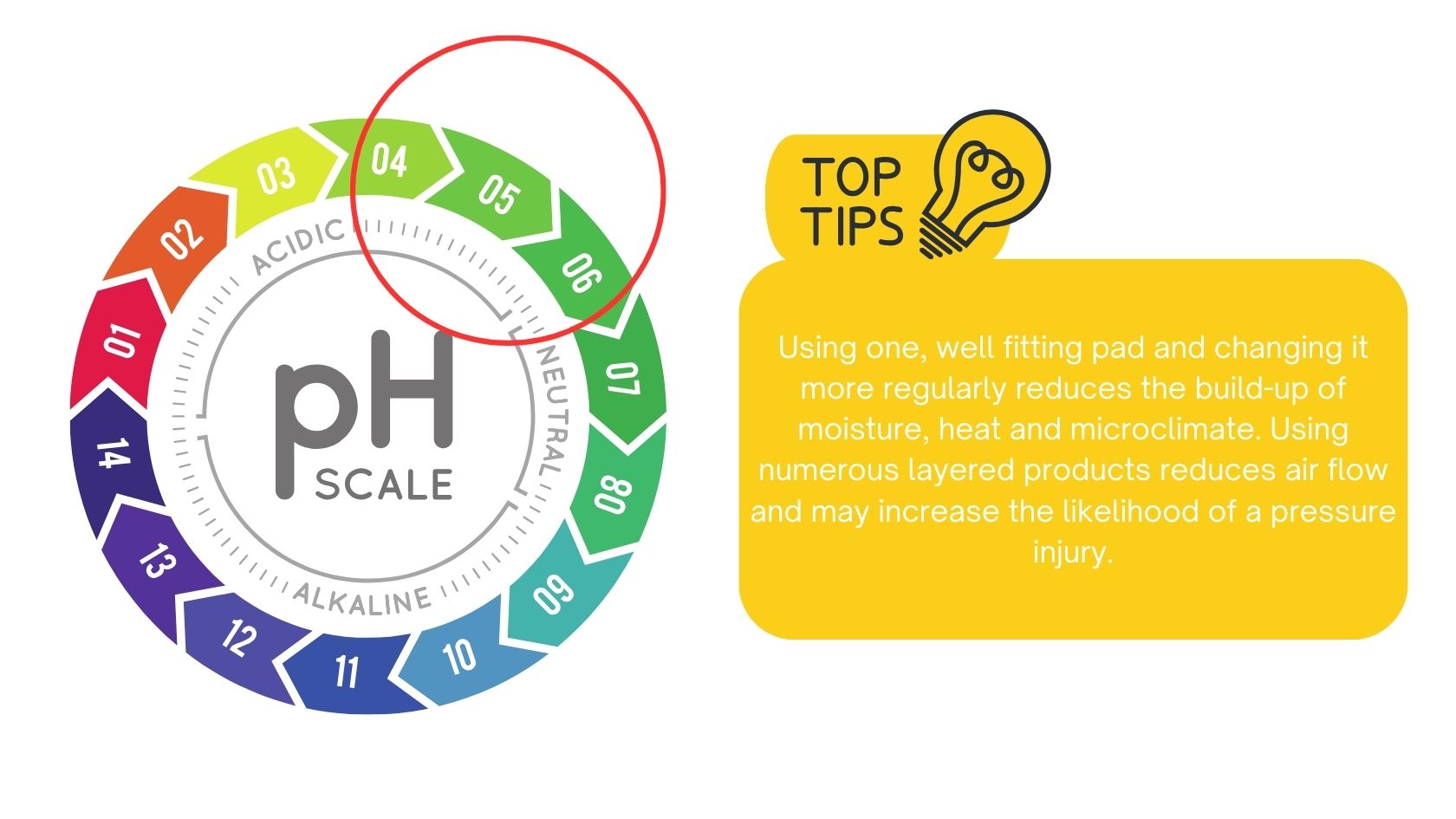
Incontinence-associated dermatitis (IAD) occurs due to an imbalance in the skin’s natural barrier. Equally, this occurs any time there is dermatitis on the skin. This can be due to a significant change to the environment such as a change of season, or exposure such as pH, moisture or additives like creams.
Exposure:
pH refers to a spectrum from 1 to 14 of acidity and alkalinity. Neutral is 7, whilst our skin sits around 4.5-6. The resident microbiome struggles to live outside these ranges. Specifically, changes in exposure negatively impact the skin barrier causing microscopic cracks in the surface, allowing its breakdown.
Urine or faeces have an average pH of 6.5, making it more acidic. Regular exposure due to incontinence slowly erodes these microscopic cracks, damaging the skin cells further.
reducing exposure:
Minimising contact with urine and faeces sounds difficult but there are some simple practices you can put in place to protect and retain your healthy skin.
cleaning
The best way to reduce exposure is to minimise the time of contact. Aim to clean and remove any incontinence soon after it occurs – the sooner the better! Effective cleaning involves a pH-neutral cleanser as regular soap contains a pH of 9-10. This assists in removing micro particles, neutralises the skin surface and reduces the likelihood of infection.
Pads
Pads or pull-ups allow confidence and independence for incontinence. Whilst there is an inclination to increase the amount of absorbency by layering pads to reduce changes, this is counter-productive. It is best practice to select a product that can suit the level of incontinence or to change more regularly. This reduces the exposure level to the skin and allows for regular cleaning.

References:
*Clinical excellence commisson, NSW Gov 2021, Incontinence Associated Dermatitis (IAD) Best Practice Principles, https://www.cec.health.nsw.gov.au/__data/assets/pdf_file/0015/424401/Incontinence-Associated-Dermatitis-IAD-Best-Practice-Principles.pdf

